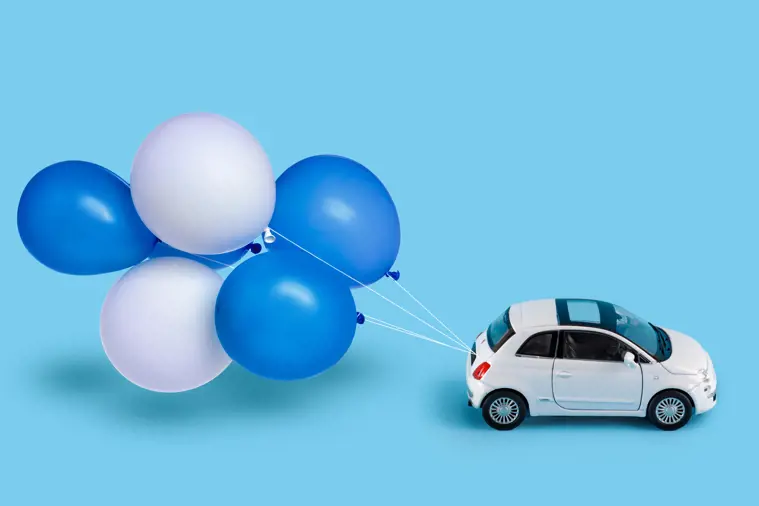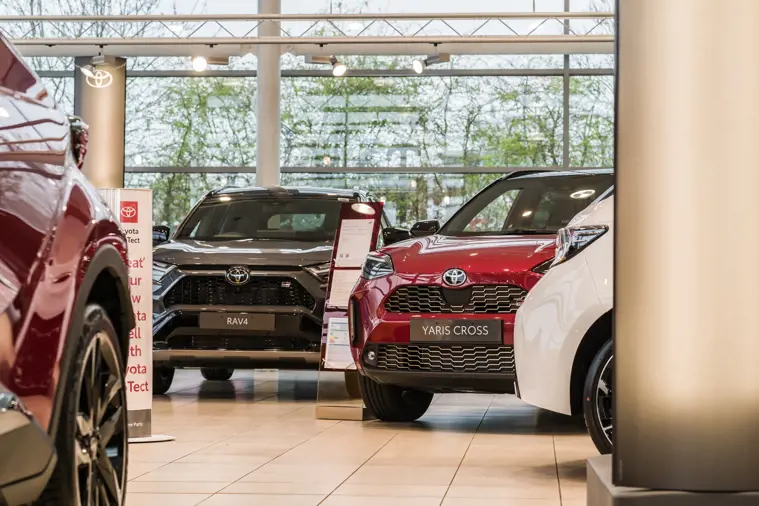What is a car balloon payment?
A large PCP balloon payment means low monthly payments, but also a big bill if you want to buy the car when the contract ends

The PCP balloon payment - typically referred to as the optional final payment - is a key part of every PCP finance agreement. It also has a major impact on the cost of your monthly payments.
The higher the balloon payment is, the lower your monthly payments. Therefore, you'll need to be particularly aware of how much it is if you want to buy the car when the term ends, though it is possible to refinance this with another series of monthly payments.
PCP monthly payments cover the difference between the car's initial price and its expected value at the end of the contract - signified by the balloon payment - rather than the full price. This differs from Hire Purchase, where the deposit and monthly payments cover the full cost of the car, so once you've made the last monthly payment, the car is yours.
As a result, PCP finance makes it easier to change cars more regularly than Hire Purchase. The monthly payments are lower and you can simply hand one car back at the end of the contract and then finance a new one.
However, if you don't correctly understand how balloon payments work, you may find yourself without enough cash when the contract ends to make the balloon payment to buy the car outright or be able to put down a deposit on a new car.
What is a PCP balloon payment?
A PCP balloon payment is the final lump sum needed to take ownership of a car at the end of a PCP finance agreement. Most car finance paperwork refers to this as the optional final payment.
PCP finance costs are split across an initial deposit, a series of monthly payments and then this optional final payment that you must pay if you want to buy the car.
If you don't want to own the car, at this stage you can return it with nothing left to pay - provided it is in good condition and within the pre-agreeed mileage allowance.
The balloon payment is fixed at the beginning of the contract, so you should always know the cost of keeping the vehicle when you get to the end of the contract. Think seriously about this. If you do want to own the vehicle at the end, but don't think you'll be able to afford it, consider Hire Purchase instead.
Hire Purchase doesn't feature a balloon payment, so the monthly payments are higher, but there's no big bill at the end to take ownership of the car - you automatically own the car once the final monthly payment has been made. As you're paying off the finance balance quicker with Hire Purchase, you'll end up paying less interest overall, provided the APR, deposit and contract length are the same.
The balloon payment is also sometimes known as the guaranteed minimum future value of GMFV. This is an estimate of the vehicle's value at the end of the finance agreement. If the vehicle is worth less at the end of the agreement, then the lender will face the financial loss if you return it.
As the optional final payment title suggests, this payment is optional. If you don't want to buy the car you can hand it back to the finance company and walk away.

How are PCP finance balloon payments calculated?
At the start of any PCP finance contract, the lender will estimate the value of the car at the end, using industry guides to help. The balloon payment is based upon this figure, though is typically slightly less in reality to protect the finance company, should the value of the car drop faster than expected.
Your monthly payments are then calculated. They will add up to the difference between the price of the car at the start and the balloon payment at the end (minus any deposit and with interest added).
In other words, the monthly payments and deposit of a PCP agreement cover the value that the car is expected to lose over the contract term - not the full price of the car. Cars that are highly desirable on the used market are likely to have higher balloon payments, while less desirable cars are likely to have lower figures.
That's why cars that retain a high proportion of their value can be relatively cheap to finance in monthly payment terms. A £40,000 car that is expected to be worth £20,000 at the end of the contract should cost the same per month as a £30,000 car that is expected to be worth £10,000 (assuming identical contract terms), because both are predicted to lose £20,000.
At the end of a PCP agreement, the remaining debt should be roughly equal to the car's value. When the contract ends you can choose to either hand the vehicle back to the lender or make the balloon payment to settle the finance and buy the car.
In some cases the car may be worth more than the balloon payment. This is referred to as having equity. If the car loses more value than expected, however, you don't need to worry: you can still return it and the lender will take the financial hit.
Should I make the balloon payment?
If you want to keep the car, then you should consider making the balloon payment. This can be done by making a one-off payment to the lender or by refinancing, which could take the form of a Hire Purchase arrangement.
However, before making any payment, it's worth getting your car valued by a car retailer or buying group. If it's worth less than the balloon payment, then you may be better off returning the vehicle and then buying a similar model on the second-hand market for less.
Be aware that if you plan to take PCP on a car and decide to make the optional final payment to buy it, that you will pay more in interest than if you took out Hire Purchase finance. (assuming the same length of contract and deposit). That's because you pay off the finance balance faster with Hire Purchase than with PCP, meaning that less interest stacks up.
What if your car is worth more than the balloon payment?
If your car is worth more than the balloon payment at the end of the contract, then paying this could leave you better-off in the long run, even if you don't want to keep the car.
You could sell the car immediately, leaving you with a surplus amount. This is not profit, but simply you getting some of what you've already paid back.
Alternatively, you can part exchange the car for another vehicle. The car retailer will make the balloon payment on your behalf - effectively buying the car for themselves - and the surplus can be put towards another vehicle. Normally this goes towards the deposit so that monthly payments on the new car are reduced.
It may be possible to sell the car at the end of a PCP arrangement, with the agreement of the lender. Most of the proceeds will go to the lender to settle the finance and you'll be able to keep any amount over the balloon payment.
Cars are often worth more than the balloon payment because lenders typically set the balloon payment to be slightly less than what they expect the car to be worth. This reduces the chances of an unexpected drop in car values leaving them with vehicles that are worth less than the remaining finance balance.
Since equity is essentially the total of any payments you've made over the amount of value the car has actually lost, if you do return the car with equity in it, that money goes into the lender's pocket rather than yours.
How to check your credit score
